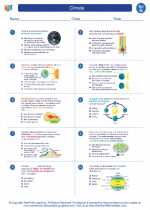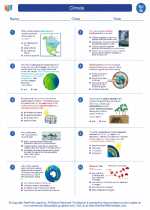What are Cyclones?
A cyclone is a large-scale air mass that rotates around a strong center of low atmospheric pressure. Cyclones can occur over both the ocean and land, and they are known by different names in different regions. For example, cyclones are called hurricanes in the Atlantic and eastern Pacific, typhoons in the western Pacific, and cyclones in the Indian Ocean.
Formation of Cyclones
Cyclones typically form over warm ocean waters where the sea surface temperature is at least 26.5 degrees Celsius (80 degrees Fahrenheit). As the warm air over the ocean rises, it creates an area of low pressure below. This draws in more warm, moist air from the surrounding area, which fuels the cyclone's development. As the air continues to rise and cool, it forms clouds and releases latent heat, further intensifying the storm.
Characteristics of Cyclones
Cyclones are characterized by strong winds, heavy rainfall, and thunderstorms. They can cause extensive damage to coastal areas and have the potential to cause widespread flooding and destruction. The strength and impact of a cyclone depend on various factors, including its size, wind speed, and the topography of the affected area.
Study Guide for Cyclones
- Describe the formation of cyclones and the conditions necessary for their development.
- Explain the difference between cyclones, hurricanes, typhoons, and other similar weather phenomena.
- Discuss the impact of cyclones on coastal communities and the measures taken to prepare for and mitigate their effects.
- Investigate the role of technology, such as satellites and radar systems, in tracking and monitoring cyclones.
- Research the historical significance of notable cyclones and their impact on human populations and the environment.
Understanding the science behind cyclones is important for comprehending the forces of nature and the potential impact on human societies. Stay curious and keep exploring the fascinating world of meteorology!
.









